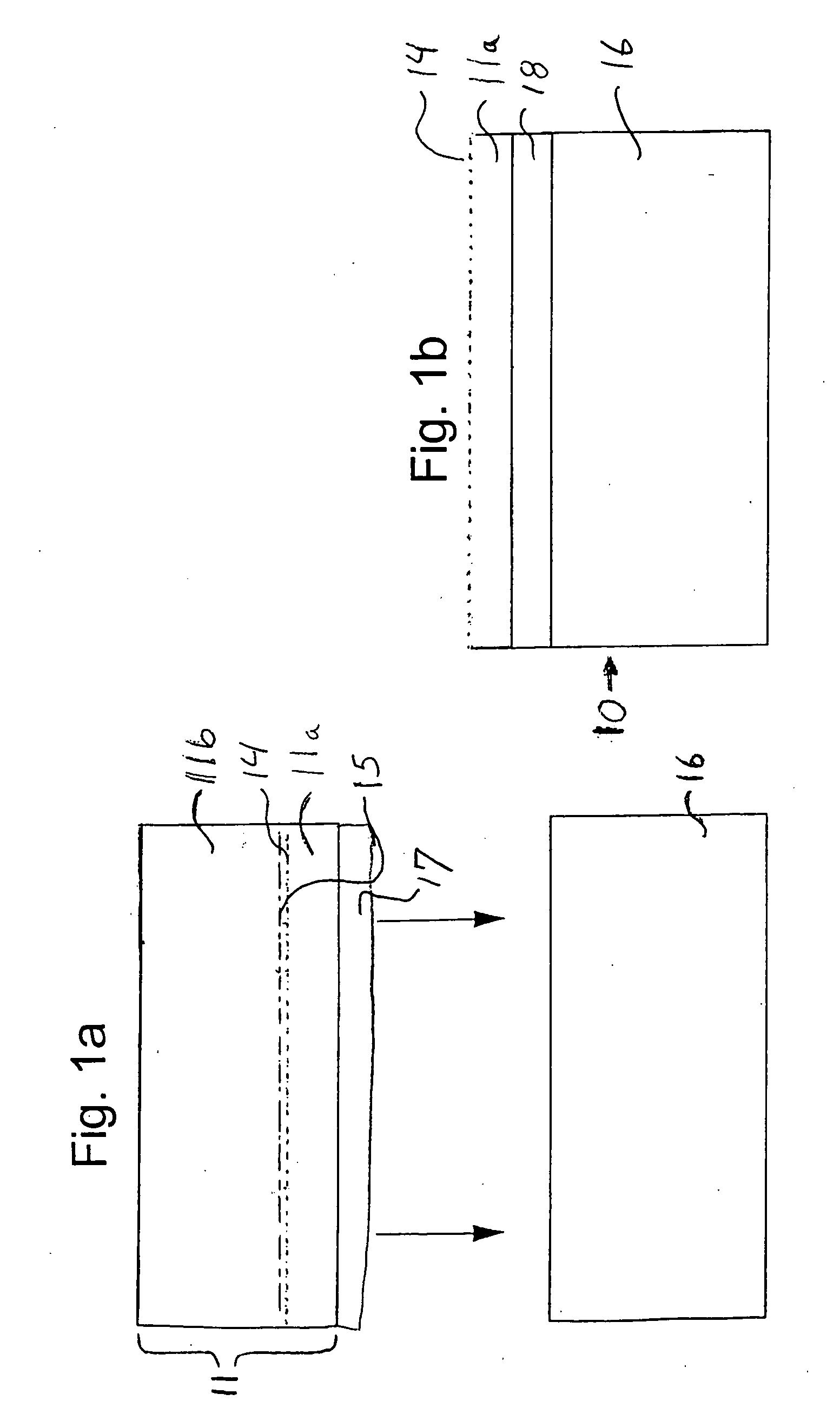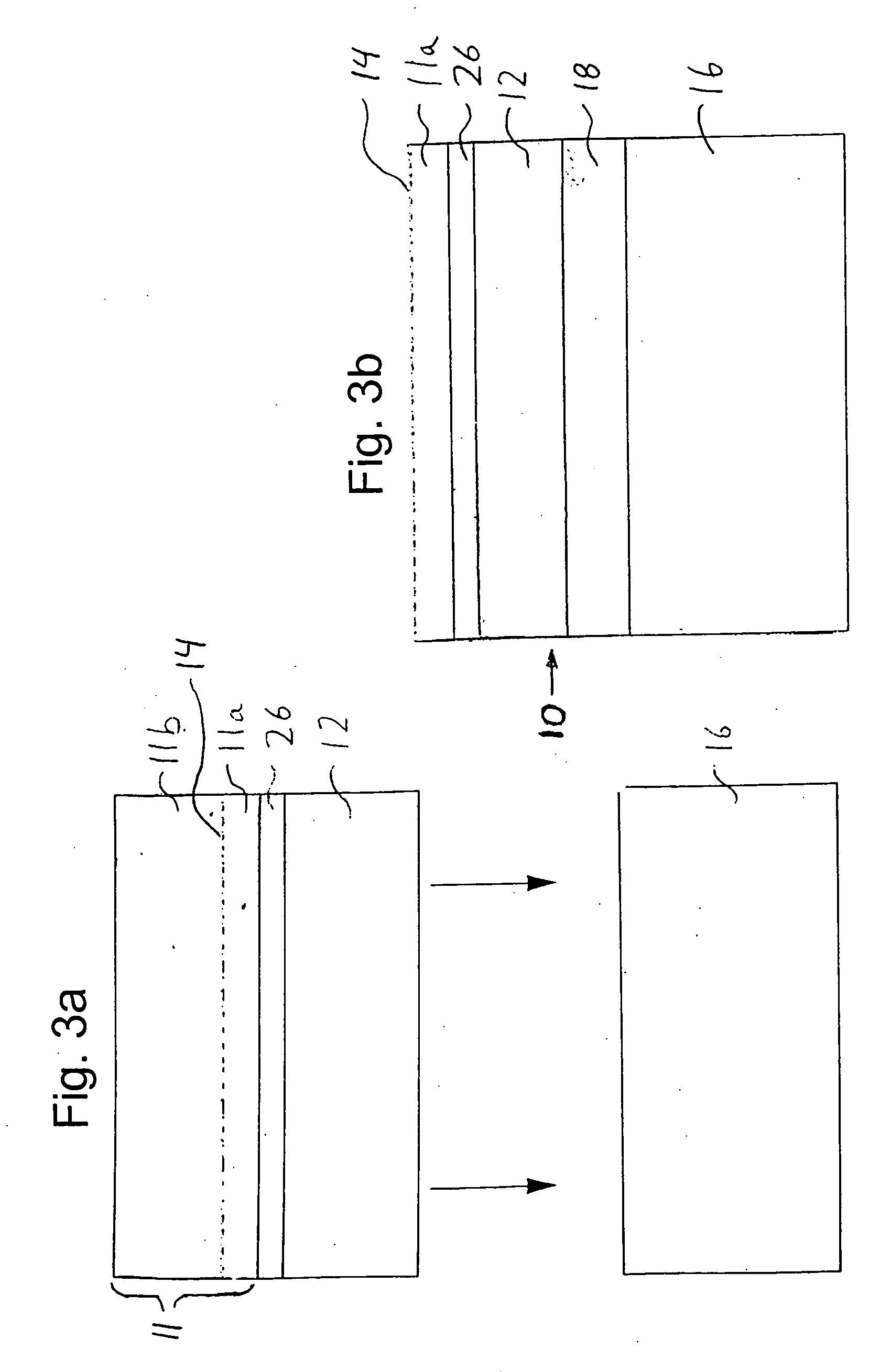Method for transferring thin film layer material to a flexible substrate using a hydrogen ion splitting technique
a technology of hydrogen ion splitting and thin film layer, which is applied in the direction of basic electric elements, electrical equipment, electric/electrostrictive/magnetostrictive devices, etc., can solve the problems of not being able to obtain the best quality thin film material, isolating and then transferring the thin film layer, and the risk of damage to the thin film layer during this process is considerabl
- Summary
- Abstract
- Description
- Claims
- Application Information
AI Technical Summary
Problems solved by technology
Method used
Image
Examples
Embodiment Construction
[0043] Preferred embodiments of the flexible substrate transfer method will be discussed with reference to the drawings Referring to FIG. 1a, the basic method of thin film layer transfer is illustrated. The fabrication process begins with a first substrate 11. In this embodiment, the first substrate is comprised of a single crystal semiconductor substrate. The single crystal semiconductor material is often silicon or GaAs.
[0044] A hydrogen ion implant operation is carried out next. A hydrogen ion splitting layer 14, i.e. the peak of the hydrogen implant, is implanted, within the single crystal semiconductor substrate 11. The first substrate is divided into portions 11a and 11b.
[0045] An optional stiffening material layer 17 is deposited on the surface of the single crystal substrate. The stiffening material is deposited at low temperature (below the splitting temperature for the hydrogen ion implanted layer) and can consist of deposited silicon oxide, silicon nitride, silicon, SiC, ...
PUM
| Property | Measurement | Unit |
|---|---|---|
| temperature | aaaaa | aaaaa |
| splitting temperature | aaaaa | aaaaa |
| semiconducting | aaaaa | aaaaa |
Abstract
Description
Claims
Application Information
 Login to View More
Login to View More - R&D
- Intellectual Property
- Life Sciences
- Materials
- Tech Scout
- Unparalleled Data Quality
- Higher Quality Content
- 60% Fewer Hallucinations
Browse by: Latest US Patents, China's latest patents, Technical Efficacy Thesaurus, Application Domain, Technology Topic, Popular Technical Reports.
© 2025 PatSnap. All rights reserved.Legal|Privacy policy|Modern Slavery Act Transparency Statement|Sitemap|About US| Contact US: help@patsnap.com



